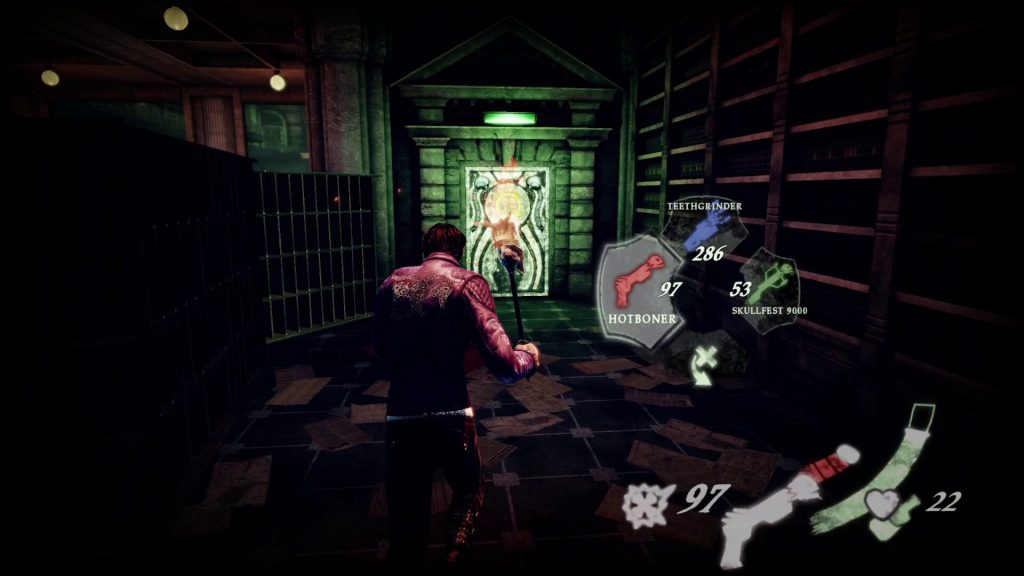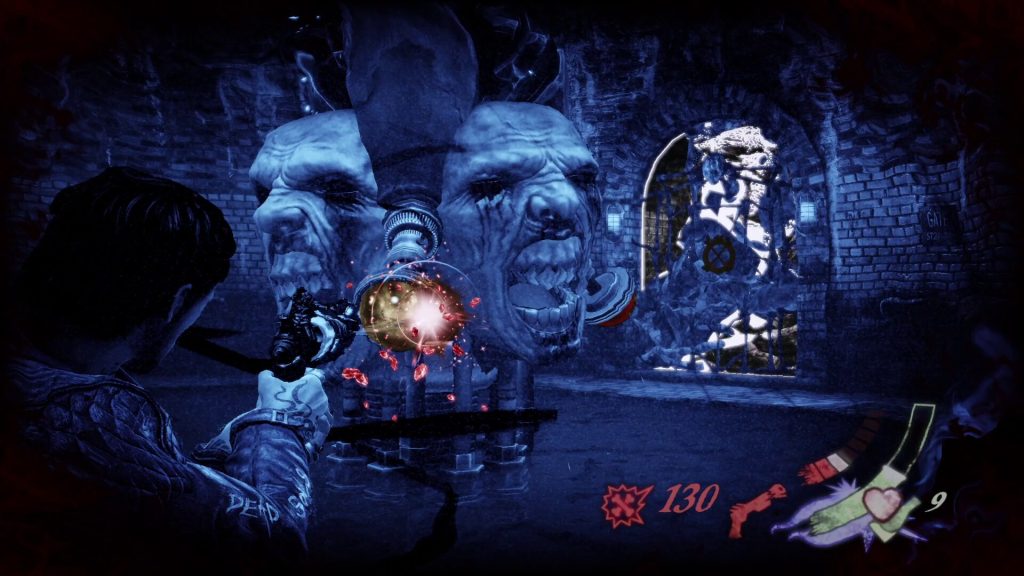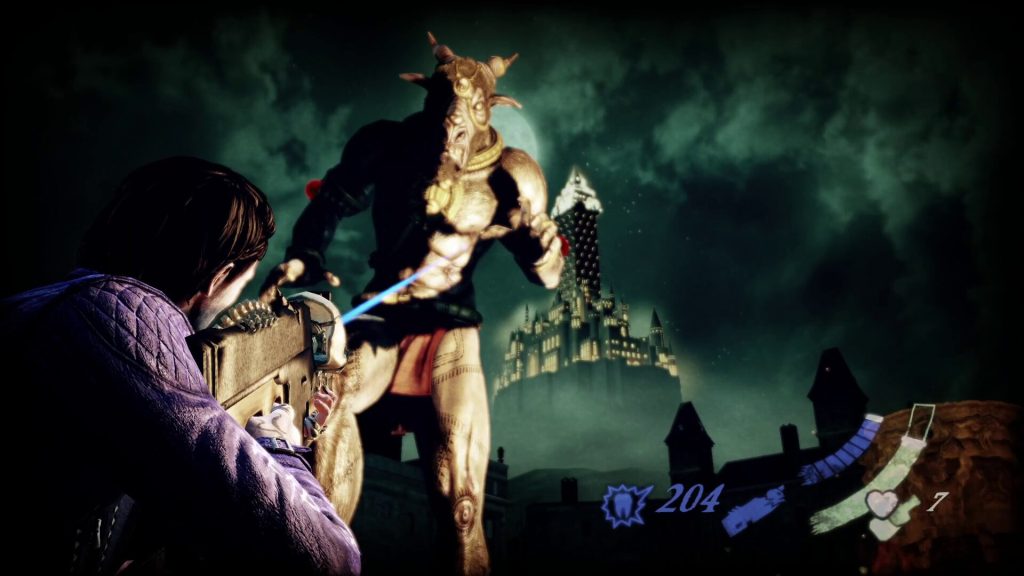A few hours into Shadows of the Damned, the protagonist reads a book about a troubled child who, in his obsession with flight, dresses up in a wingsuit and leaps off the roof of his school building.
“Elliot’s teacher looked down at the wreckage of the boy on the pavement, and never forgot what he saw,” the player character reads out loud. “One bloody hand had formed a peace sign. The other was giving him the finger.”
He pauses for a beat.
“It’s like an Alanis Morisette song.”
Welcome to Hell
This is Shadows of the Damned boiled down to its most notable components: morbid irreverence, graphic violence, and an oddly eclectic collection of pop-culture references.
It’s crass and as unsubtle as a game can be, which partly reflects its original release year of 2011 – a very different time for video games. Originally released only on Playstation 3 and Xbox 360, Shadows of the Damned can now be played on Windows and most modern consoles with Hella Remastered.
Among the creators of Shadows are two very recognizable names from the Japanese game development industry. The game was written by Goichi Suda or Suda51, known for such offbeat titles as Killer7 and No More Heroes, and produced by Shinji Mikami of Resident Evil fame. It’s rare for a modern video game to reflect so much of its creators’ quirks, but this is very much what sets Shadows apart. From the main character’s name (Garcia Hotspur), to the weapons (Garcia’s main gun is called the Boner), to the scenarios (one area is just literally the Evil Dead cabin, complete with the trap door), this game is very much a product of Suda51’s strange sense of style. Likewise, its third-person over-the-shoulder perspective and resource management mechanics strongly echo those from Resident Evil 4.
The plot of Shadows is very simple: Garcia’s girlfriend Paula is kidnapped by demons, and he descends into the underworld to rescue her.
Save points are marked by a chubby floating demon that drops a smoking pile of poop.
Garcia is accompanied by his sidekick, Johnson, a floating skull who is also his main tool. Among other things, Johnson transforms into a motorcycle, a torch, and into all the guns that Garcia will use in his adventure. He also talks with a delicate English accent and serves as Garcia’s guide to the ways of the underworld. Johnson serves as the game’s tutorial at various points, explaining why goat heads expel darkness when lit, why demons like strawberries (you will need them to open certain guarded doors), and how drinking alcohol heals instead of harms.

It’s all very outlandish and bizarre.
Underneath the leathery exterior
Hell is a place with its own set of rules. Throughout the game, new concepts are introduced, and the player’s verb set is expanded upon. Visual cues are carefully designed to nudge the player into the proper course of action. For example, bombs are introduced as an obstacle-clearing mechanic, but eventually, the same patterns that used to be on breakable walls start appearing on enemy armor, encouraging the player to experiment on different objects with their current abilities.

Most of the game’s boss fights are great final exams on the player’s understanding of a particular mechanic. While many of them boil down to “shoot the big red spot”, exposing the red spot can require some clever use of Garcia’s skills.
Unfortunately, not all of the game’s mechanics are as successful. The gunplay is mediocre at best, and aiming is more difficult than it should be because of the way the crosshair works: while all the weapons have a laser sight, the indicator that shows where shots will land only appears when the player is aiming directly at an enemy.
Most of the environments are empty and are just variations of a dark hallway or cavern with the odd bit of gore strewn about. A handful of areas are marginally more inspired, like a demonic library and a 2D world made of paper cutout dolls, but they are few and far between. A neon-lit red light district theme is arguably wasted on just a series of clunky turret sections.

I love killing f**king demons
Ultimately, Shadows is a game being pulled in several different directions. It’s most notable for its oddball sense of style and humor. The execution, however, is average at best, and while some of the mechanics are good, better examples of most aspects of the game can be found in other titles. If you’re a fan of this peculiar intersection of grindhouse horror, shameless innuendo, and out-of-the-blue pop-culture references, there’s fun to be had here.


